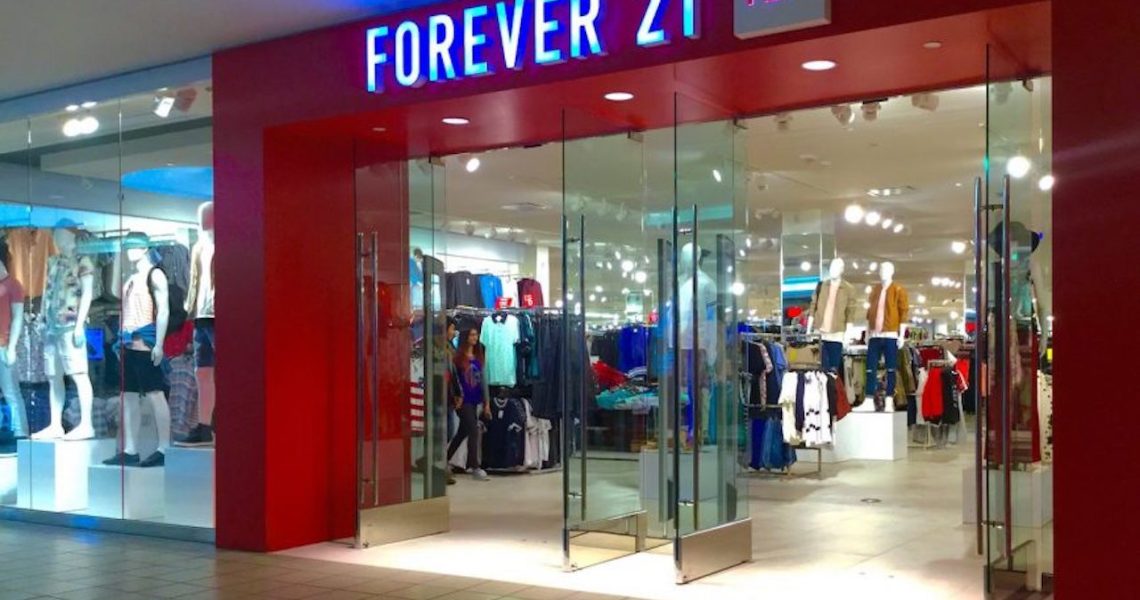The need for speed gave rise to fast fashion, for better or worse. No, the brands composing the category aren’t made sustainably or with longevity in mind. They don’t have a great, feel-good story behind them, and their customer service is notoriously subpar. But they’ve long done the job of getting emerging trends to consumers first, not to mention at a low cost. And consumers have long been willing to ignore what they’re lacking for the sake of fashion.
But times are changing. And Forever 21’s bankruptcy, announced early this week, shed new light on the category’s state and direction.
Speed is no longer unique to fast fashion; every brand is now working to be fast, largely to compete with Amazon. Second, e-commerce is the path of least resistance for shoppers, and fast-fashion brands have historically thrived in physical retail. And finally, mall developers are being more choosy about their retail tenants, amid increasing need for restaurants, gyms and other experiential offerings. The dwindling space reserved for fashion is now sacred, and sexy, digitally native brands are landlords’ Holy Grail.
It’s been hard times for fast fashion’s OG brands: In March, weeks after announcing Chapter 11 bankruptcy and plans to close 94 stores, Charlotte Russe said it would liquidate and close all 500 of its stores. Some locations have since reopened under a new owner. In May, Topshop revealed plans to close all 11 of its U.S. stores. And in recent years prior, mall regulars including Wet Seal, Bebe and Delia’s declared bankruptcy or closed their physical stores. Delia’s went out of business entirely.
In contrast, as retail sales shift to e-commerce, digitally native fast-fashion brands — most notably, Fashion Nova — are seeing good traction. Even Nasty Gal, which has seen its fair share of struggles, has hit a good stride since being purchased by Boohoo Group in 2017 and remaining focused on online sales. Among longstanding players, H&M, which has nearly 5,000 stores globally, has seen a three-year slump in earnings. Zara is by no means struggling, but its sales growth is slowing. Now, smartly, it’s ramping up its e-commerce focus.
Forever 21, for its part, plans to close a total of around 350 stores, but will keep several hundred U.S. stores and its e-commerce site afloat.
“They clearly have not taken the time to understand how their target customer, a Gen-Z shopper, is engaging with them across channels,” said Alana Eversole, head of strategic growth at brand and retail consultancy Fitch. “Rather than making investments to strategically ensure the customer is able to shop and engage with the brand when and where they want, they prioritized speed-to-market, which is the core of their model, and also quick expansion to gain market share.”
Ad position: web_incontent_pos1
The brand continued to roll out stores, yet like many other fast-fashion brands, they fell short of consumer expectations, she said.
“Shoppers want to be entertained, play, learn new things,” said Eversole. “At some of the new developments, retailers are being given permission [by the mall owners] to experiment, and it’s on them to take advantage of that. Brands that don’t deliver are the ones that are going to die off.”
Meanwhile, American Dream, the mega-mall launching in New Jersey’s Meadowlands later this month, is promoting in press materials that it will have the world’s largest stores of “fast-fashion favorites” including Zara, H&M, Uniqlo and Primark. On a hard-hat tour of the space in July, a representative also mentioned it would feature a Forever 21 store. America Dream could not be reached to provide a current status.
But generally, developers behind new shopping centers have been increasingly gunning for DTC brands over the familiar mall stores, along with service- and entertainment-based companies that work to drive foot traffic.
Moving forward, however, thanks in part to the mass closures of Forever 21 stores — many of which will leave department store-size holes — landlords will be forced to get more creative. For now, many have moved to taking stakes in tenants’ companies to alleviate “prohibitive” leases, working to lure retailers while saving face, said Scott Stuart, CEO of the corporate restructuring company Turnaround Management Association.
Ad position: web_incontent_pos2
“Fewer department stores are opening,” he said. “Nobody needs a large physical footprint with the urgency we used to see. Now it’s about realigning online consumerism and the big boxes that remain.”




